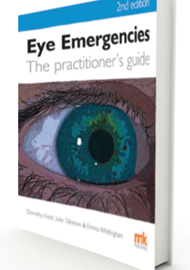This book is a comprehensive guide for medical practitioners – nurses or doctors working in the primary care or emergency care setting. It begins with a description of basic anatomy of the eye and the clinical significance of various structures. There is a useful chapter on triage and techniques of ophthalmic assessment.
Illustrations of red and amber flags have been used throughout the book to emphasise the significant signs and symptoms, the presence of which might indicate the urgency for referral to an ophthalmologist.
The next sections focus on emergency eye conditions, trauma and non-urgent eye conditions as separate groups. All these chapters include very comprehensive, well organised and detailed information about the clinical manifestations of common eye conditions, a plan for management and timescale for referral. The important signs are indicated by flags as mentioned before and can be used for quick reference. The chapter on other non-urgent eye conditions that are also seen very frequently discusses treatment and advice for these patients.
Drugs commonly used in acute eye conditions are briefly mentioned along with the dosage, indications, contraindications and cautions. The concluding notes include a helpful summary table outlining the guidelines for referral. There is a very concise segment on examination techniques and minor procedures.
It has an easy to read format and could have included more photographs. In summary, this book is very practical and would be a valuable resource for emergency eye care practitioners.




